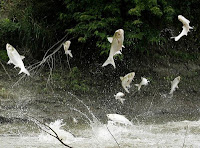The Southern advantage that showed in this week's extension of the Farm Bill may be more likely to continue because Sen. Thad Cochran, left, has exercised his seniority to become ranking member of the Senate Agriculture Committee. "Pat Roberts of Kansas wanted to maintain the position but yielded," Bob Meyer of Brownfield Ag News reports.
The bill passed by the Democratic-controlled Senate last year "was centered on revenue-based crop insurance, which rice and peanut farmers found inadequate," Meyer notes. "The House version had some commodity programs and was more conducive to their interests."
Meanwhile, Meyer reports that the ranking Democrat and former chairman of the House Agriculture Committee has told Republican leaders that he won't work on a new Farm Bill unless they promise in writing to bring a bill to the floor -- which they didn't do last year because of divisions in the GOP between farm-district representatives and those who put a priority on reducing food-stamp spending, which was 80 percent of the Senate bill's budget.
Rep. Collin Peterson of Minnesota told Speaker John Boehner in a letter that he and other Republican leaders had disrespected the committee's work in writing a bill. He told Majority Leader Eric Cantor in a letter that the leaders' assertion that the bill didn't have the votes to pass was "patently false. The leadership team never conducted a whip count, never asking members whether they would vote for or against the committee package. I brought together members from both parties to conduct a count, and we found enough votes to pass it."
Also from Brownfield, here's a list of the members of the House committee for the 113th Congress. Two Democratic seats remain to be filled.
The bill passed by the Democratic-controlled Senate last year "was centered on revenue-based crop insurance, which rice and peanut farmers found inadequate," Meyer notes. "The House version had some commodity programs and was more conducive to their interests."
Meanwhile, Meyer reports that the ranking Democrat and former chairman of the House Agriculture Committee has told Republican leaders that he won't work on a new Farm Bill unless they promise in writing to bring a bill to the floor -- which they didn't do last year because of divisions in the GOP between farm-district representatives and those who put a priority on reducing food-stamp spending, which was 80 percent of the Senate bill's budget.
Rep. Collin Peterson of Minnesota told Speaker John Boehner in a letter that he and other Republican leaders had disrespected the committee's work in writing a bill. He told Majority Leader Eric Cantor in a letter that the leaders' assertion that the bill didn't have the votes to pass was "patently false. The leadership team never conducted a whip count, never asking members whether they would vote for or against the committee package. I brought together members from both parties to conduct a count, and we found enough votes to pass it."
Also from Brownfield, here's a list of the members of the House committee for the 113th Congress. Two Democratic seats remain to be filled.















